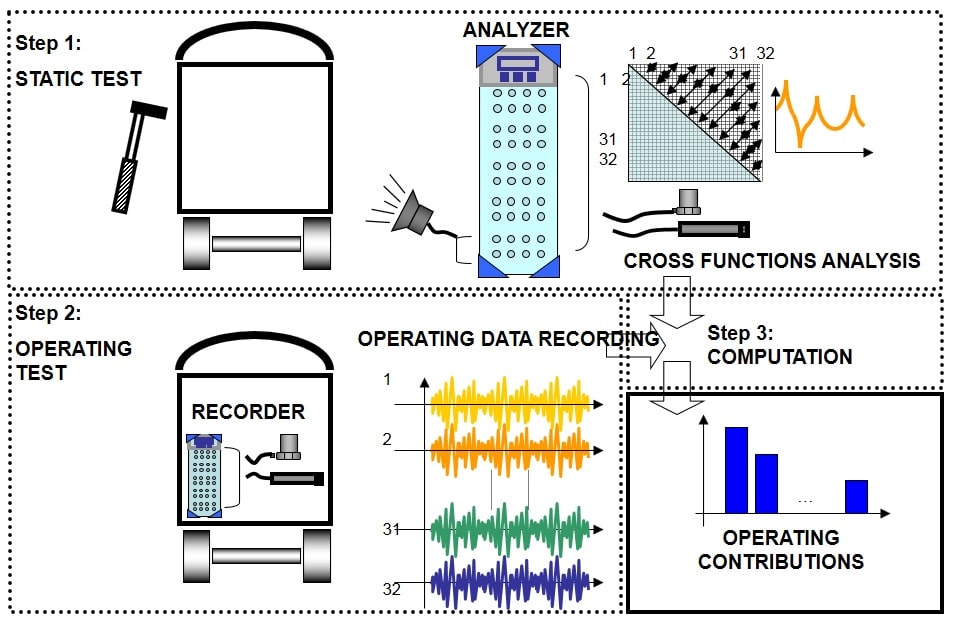ICR has developed the ATPA (Advanced Transfer Path Analysis) method of transmission path analysis. The analysis establishes the connectivity relationships between the different subsystems of a network representing a given physical model to be analysed. From the vibration of each surface of the passenger compartment of a vehicle (subsystem), its contribution to the interior noise perceived by the passenger can be determined.

The method allows the contribution of each subsystem to be obtained as an element decoupled from the rest of the assembly. This approach is equivalent to considering that the rest of the subsystems are blocked. And that only the element under study contributes to the noise received in the passenger compartment.
The application of the method allows to anticipate which elements contribute most to the noise in the receiving subsystem (e.g. a microphone inside the tested vehicle). Therefore, it allows to prioritise interventions on particular components in order to improve the level of acoustic comfort. The method can also be applied to assess the individual contribution of each subsystem to the total mechanical vibration received at a position of interest.
The ATPA analysis presents the information by providing numerical answers as to which changes need to be incorporated into the product to reduce the overall noise level. Knowing the noise emitted by each component allows the effect of any changes on the overall vibro-acoustic phenomenon to be assessed.
APTA FOR THE FUTURE
Currently, research into the ATPA method includes both theoretical and experimental aspects. Some of the recent theoretical developments, include the improvement of equation solving systems. By means of regularisation and resampling or the deepening of the knowledge of non-linear mechanical systems. In the experimental field, the trend is to optimise measurement methods, to develop specific adaptations of the method to different cases or to make the technique more flexible for use with operational acquisitions.
WANT TO KNOW MORE ABOUT THIS SERICE?
Learn more about its application in these introductory videos






